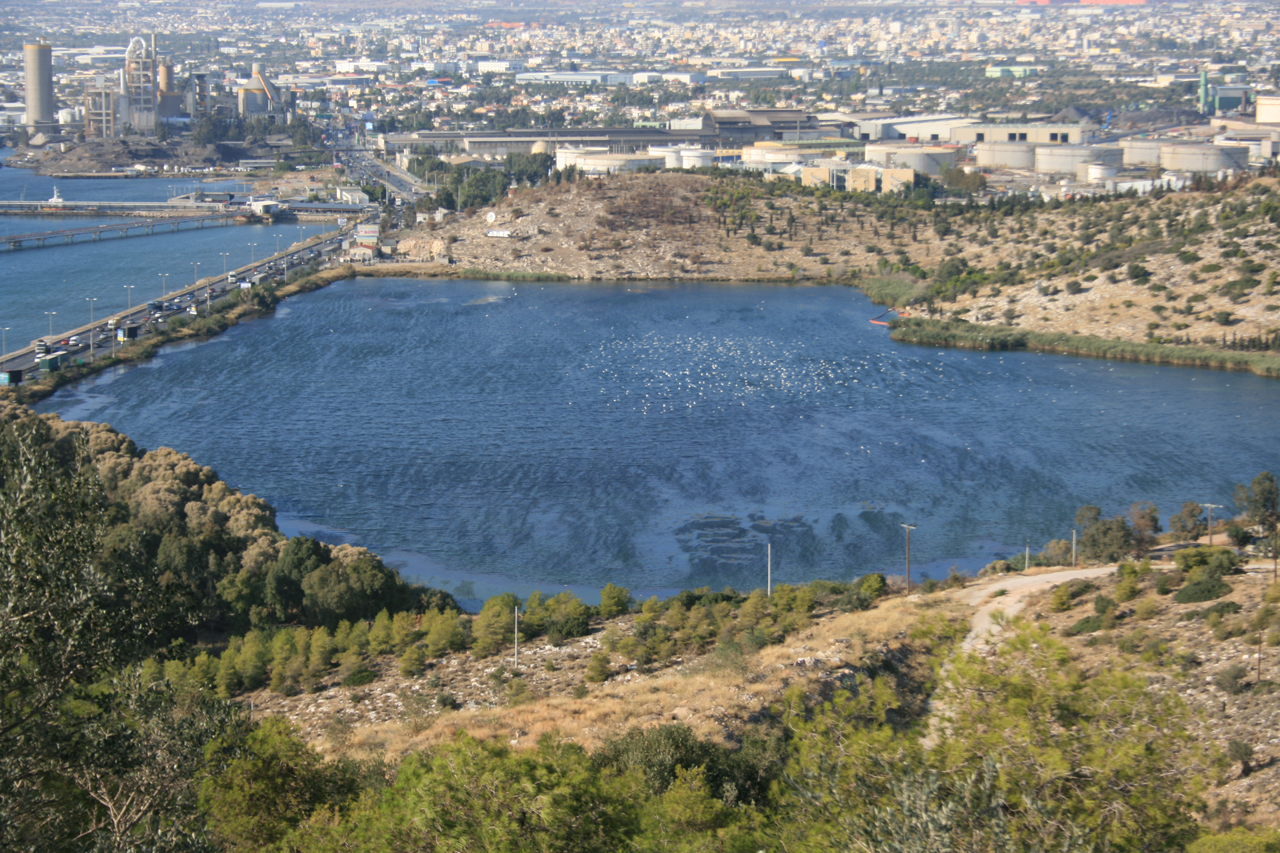Lake Koumoundourou and Hill of Echos
Lake Koumoundourou and Hill of Echos
The area is classified as a Landscape of Special Natural Beauty and is protected in an area of 218.37 hectares, a total perimeter of 6.2 km with a maximum altitude of 200 m and a minimum of 49.0 m. It is one of the largest wetlands in Attica.
Lake Koumoundourou is located in western Attica, on the northern side of the Elefsina bay and administratively belongs to the Municipality of Aspropyrgos. The wetland extends near a military area, within an industrial zone next to oil refining facilities. The surface of the lake is 143 square meters. In its largest part, the lake is shallow with an average depth of about 1.5 m, while at the point where its sources are located, the depth reaches up to 3 m. In the northern part of the lake towards the Elefsina bay side, there is a sluice gate, which controls the outflow of water to the sea. In recent years, there has been a reduction in the effect of seawater and a gradual transition of the characteristics of the system from those of the lagoon to those of the lake. Dense monospecific layers of charophytes dominate the lake, with a coverage of about 70%. On the western shore of the lake the species Stuckenia pectinate (current scientific name of Potamogeton pectinatus) occupies a considerable part of it (10%) and almost along the entire length of the eastern shore and up to a depth of 60 cm, dense stands of the common reed, Phragmites grow australis.
Since 1974, the lake has been declared an archaeological site (GG 5/B /8-1-1974, YA /41 /1 /2-74). There are traces of a part of the Sacred Way that from the Sanctuary of Aphrodite in Afaia detours to the right on the hill of Echos to the southern part of Lake Koumoundourou. Also, based on Law 2742 /1999, a distance of 50 m around it has been designated as a periurban park zone. In ancient times, there were two lakes known as Reitoi or Lakes of the Cathars and they were connected with the Eleusinian Mysteries. According to sources, the two lakes existed until the 1950s, when the northern lake, also known as Kefalari, dried up, while the other after World War II was renamed Lake Koumundourou, the area of which was significantly reduced due to expansion of the Athens-Corinth National Road. In addition to its archaeological importance, the lake is also of ecological interest. According to the Hellenic Ornithological Society (Tzali ca. 2013), 36 species have been recorded, of which 6 belong to Annex I of Directive 2009/147/EC. The wetland is home to a large number of waterfowl and gulls, which use the wetland for wintering, despite extreme habitat degradation.



